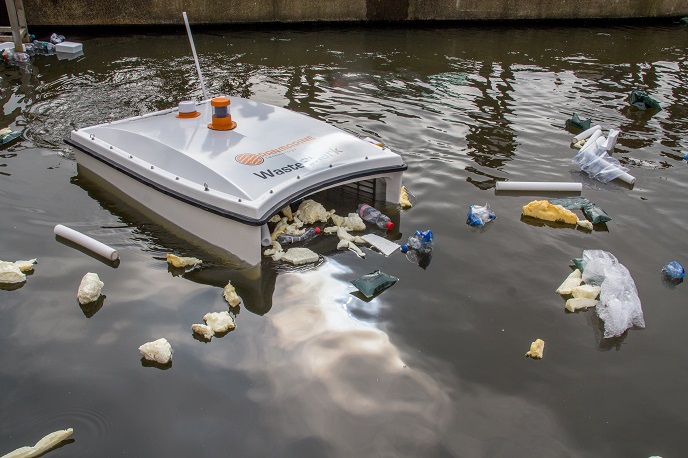Aquadrones remove, deliver and safely empty marine litter
It has been estimated that marine litter costs the EU economy EUR 690 million per year, affecting mainly the tourism and fishery sectors. It is furthermore estimated that around 80 % of marine litter originates on land. Bearing in mind that once plastic reaches the ocean the vast majority of it ends up on the seabed or inside marine life, addressing the problem requires effective water-based capture alongside tackling it at source. With EU support, RanMarine has added a new innovation to its suite of marine litter solutions. Their SharkPod allows aquadrones, known as WasteSharks, to autonomously deliver and empty waste, debris or biomass, from ports and inland waters, safely on shore. The WasteSharks have a carrying capacity of 200 litres, with a buoyancy of 400 kg. Self-organising swarms can operate collectively and, using sensors, gather crucial environmental data while collecting garbage. Robust and ravenous “Our starting point with WasteShark was that there were already solutions for catching waterborne waste, but very few that can deliver it back to shore,” says project coordinator Mr Richard Hardiman. Once target areas are identified, the WasteShark aquadrones are deployed to collect the litter, which is stored in a basket below deck. An on-board algorithm detects when each drone is ‘full’, triggering its return to the SharkPod vessel to be emptied. It is here that the drones also recharge their batteries. The aquadrones are able to work collectively as a swarm, making decisions based on interactions and shared knowledge. For example, if one drone is quickly filling up, an assumption can be made that that location is waste-dense, resulting in additional drones being deployed. This information is logged for future correlation with similar weather or tidal conditions. “Having more knowledge about your environment makes decision making better. The hope is that as the aquadrones learn more about their environment, they become more efficient, resulting in faster capture of trash and ultimately cleaner waters,” says Hardiman. The aquadrones’ ability to collect and collate data also means that measurements can be taken of anything from turbidity to oxygen/nitrogen levels or toxicity parameters. Longitudinal data-sets can then be used to create predictive models for phenomena such as algae blooms, fish die-offs, or toxicity dangerous to humans. As they are intended for harsh environments, the aquadrones have to be robust, and so design was guided by the principle that fewer moving parts equates to fewer repairs and replacements. Technically the only moving parts are two thrusters. Predictive and proactive solutions Currently RanMarine are selling WasteSharks in two formats, Class A and Class B. Class A is a remote-controlled unit driven by a land-based operator and used solely to collect and remove biomass. Class B is a data and sensor-enabled unit with mission planning ability, whereby the aquadrones can course-set or manage a particular area for cleaning. RanMarine is seeing demand for both units and is already shipping globally. The team are now working to further fine-tune their products. “We remain passionate about using technology to improve our environment. We are getting closer to a predictive model of where trash collects in water, along with the development of evermore efficient methods for removing it,” says Hardiman.
Keywords
WasteShark, aquadrone, SharkPod, ocean litter, waste, pollution, environment, plastics, Big Data







